The similarity in one, two and three dimensions
The similarity in one, two and three dimensions
Aquest mòdul consta de 6 apartats que convé veure ordenadament de forma seqüencial començant per les circumferències amb cadeneta.
See the slides and explanations detailed below
- Hotel Area: Sala Pere Puig Adam
- Minimum age: from 10 years old.
- Time required: 10 minutes.
- Number of participants: One or more people
- Keywords: scale, proportion, surfaces, volumes
- Taxonomy: GEOMETRY
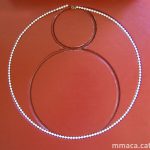
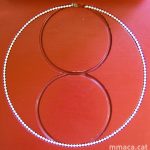
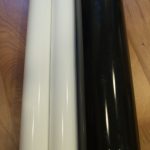
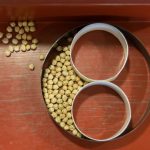
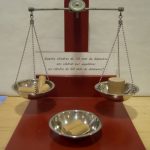

1st What is longer, a circumference of 30 cm in diameter or two of 15 cm.
If we use the cord to fit it, on the one hand, in the large circumference and on the other to the two small ones we will conclude that the answer is: they have the same length.

2. What is longer, a circumference of 30 cm in diameter or the sum of one of 10 cm and one of 20 cm in diameter?
The same as in the previous section, if we use the cord to fit it into the circles, we will conclude, that the answer is: they have the same length.
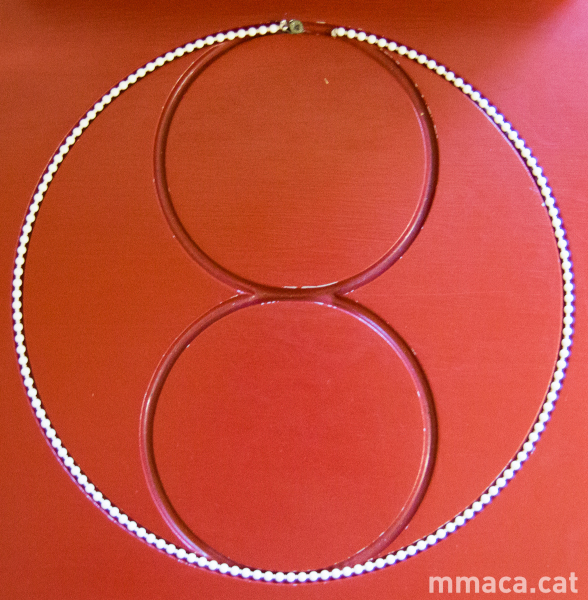
3. Where will the most air pass, by a tube of 20 cm or by two of 10 cm in diameter?
The initial trend, fuelled by the result of the challenges of the previous sections, is to opt for equality.
However, and reflecting at the same time that seeing the sections of the tubes of the following section the answer is: It will pass more air through the 40 cm tube.
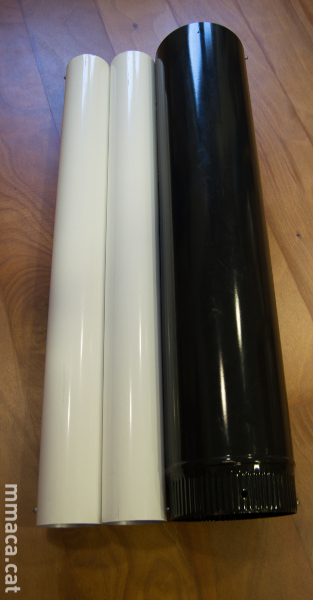
4t How many times the section of the large tube is larger than the smaller one. Measure it with balls.
After conjecturing, the 4 areas can be measured experimentally using a strange unit, the chickpea. We will fill the inner section of the small tube with chickpeas (avoiding holes and overlaps) and then place the same chickpeas in one of the two spaces that remain between the small tubes and the large tube and discover with surprise that the two areas are the same . In this way the answer is: Four
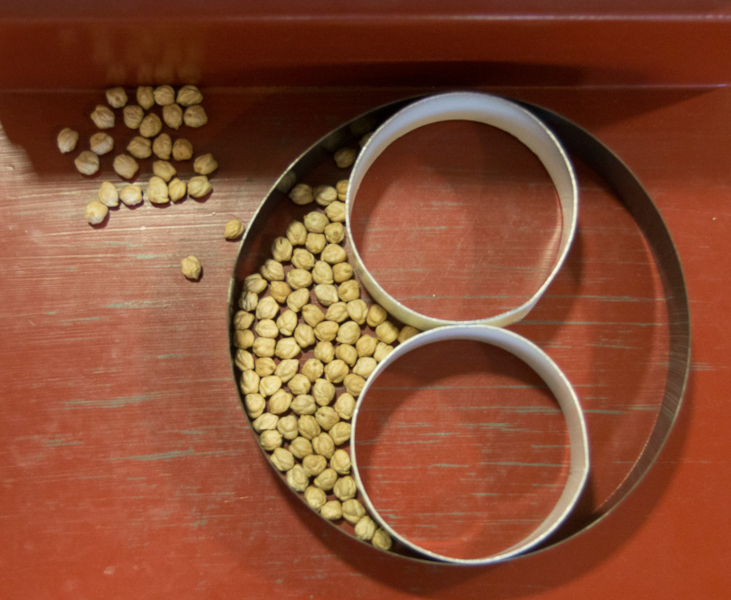
5th How many cylinders of 30 mm in diameter will we need to balance a cylinder of 60 mm in diameter?
Taking into account that the height is the same for both large and small cylinders, and bear in mind the previous result, of course: it will take 4 small cylinders.

6th How many spheres of 40 mm in diameter will we need to balance a sphere of 80 mm in diameter?
Now, there are spheres instead of cylinders. Although the initial conjectures are usually diverse: 4, 6, 8. Using the scale it is observed that 8 small spheres are needed to balance the large one.
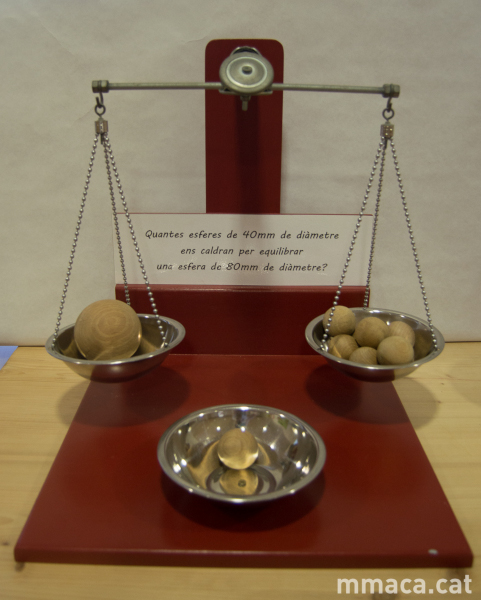
Explanation of these results:
Existeix per descomptat una explicació a partir de les fórmules del volum de l’esfera, de la superfície del cercle i de la longitud de la circumferència (veieu l’article de l’Anton Aubanell).
But there is a way to understand it intuitively:
Els objectes que hem comparat tenen una proporció 1:2
En el cas de la circumferència, tots els elements longitudinals (d’una dimensió) com radi, diàmetre, arcs, perímetre, mantindran aquesta la proporció, seran el doble.
En el cas del cercle, el concepte de superfície és un element de dues dimensions, per tant, cal multiplicar l’increment d’una direcció pel mateix increment en l’altre 2×2=4. Les superfícies es multipliquen per 4.
En el cas de l’esfera, el concepte de volum és un element de tres dimensions, en conseqüència, cal multiplicar tres cops l’increment d’una direcció. La relació de volums és 2x2x2=8. Els volums es multipliquen per 8.
